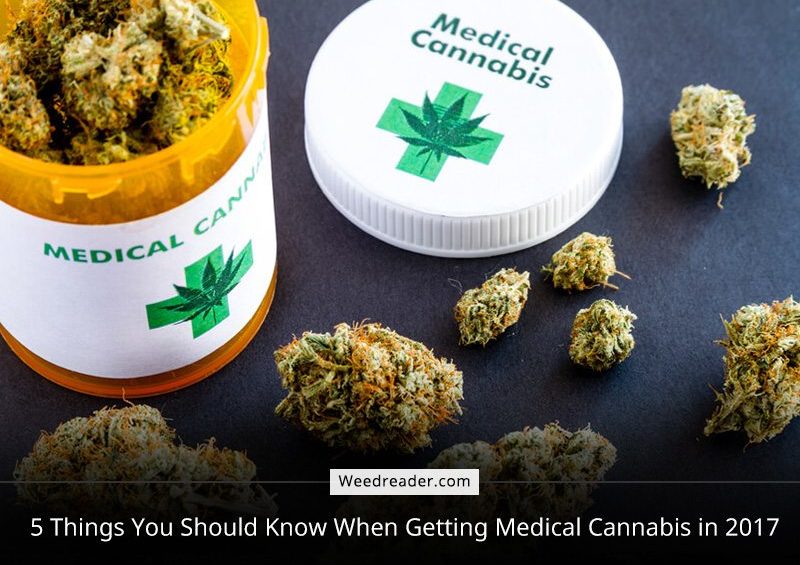As California prepares for the upcoming wave of dispensaries and shops set to provide legalized recreational cannabis; many people are still confused about medical marijuana, how to get it and how it might help them. Here are 5 things you should know about medical cannabis and getting your hands on it in 2017 …
1. Is a Medical Marijuana Card Still Necessary?
A medical marijuana card is still necessary until January 2018, when legalised recreational cannabis kicks in. Getting yourself a medical marijuana card will save you money both now and in the future (no sales tax on medical marijuana as well as dispensary deals), give you access to more dispensaries and a greater range of products, and give you the opportunity to grow cannabis. Yes, it costs to get a MMJ card and recommendation letter, but it’ll likely save you lots of money in the long-term.
Moreover, getting a medical marijuana card is easier than ever, especially with telehealth (and yes, I am available over telehealth – we are HIPAA compliant, totally private and extremely secure). All you need to do is:
- Sign up at doctorfrank.com (or any other reputable site)
- Fill out the medical marijuana evaluation form, attaching any relevant medical records you may already have proving your condition/s.
- Talk to the doctor, which in this case will be myself, Dr. Frank D’Ambrosio.
- If you qualify, you will be given a signed recommendation letter.
- This recommendation letter can be emailed to you, so you can start using your recommendation letter straight away.
- A medical marijuana card can be sent to you via post – not necessary, but highly recommended, and many dispensaries prefer you to have one.
2. Finding the Right Dispensary
Once you have your cannabis card and recommendation letter, it’s now a matter of going to the right dispensary. As everyone prefers a different environment, I recommend reading the dispensary’s reviews online, asking others if you know of anyone who frequents medical marijuana dispensaries and exploring them for yourself.
The range of dispensaries out there and what they provide is immense. However, they should all still provide a decent service. Do they grow good, trustworthy cannabis in well-tended environments? Do they have knowledgeable consultants, budtenders and owners who have studied their products and can tell you about them? Do they have have social and educational classes? An onsite doctor? All of these will usually show you how seriously a dispensary takes their job.
3. Finding the Right Strain
Much of the same advice that’s been given above on finding the right dispensary can be given about finding the right strain – i.e. ask others, read reviews and give several a try. Start slowly, though, and only take a little bit at a time. First-timers (and even some seasoned pros!) may want to avoid edibles – vaporizers are usually much easier to titrate with.
Asking “sativa, indica or hybrid?” will give you a rough idea, but can be misleading on occasion. Should you be looking for a particular effect, you’ll want to look at a specific cannabinoid and terpenoid profile – the genetics will tell you more about this than the strain names. The budtender/consultant at whatever dispensary you go to ought to be able to help and know their products inside-out, but remember that different phenotypes of the same plant may have different cannabinoid and terpenoid profiles.
Also remember that “everyone’s endocannabinoid system (ECS) is different”. This means that what may work for one person may not work for you and vice-versa, even for the same condition. Sure, there may be some common effects for some people, but not everyone. Remember, though: codeine doesn’t work for everyone, yet it’s still wrongly considered a “gold standard” of cough suppression. You can overdose on codeine; you cannot do so with cannabis, except in a theoretical sense.
4. Can’t Get to a Dispensary?
You can now get cannabis delivered to your door, securely, relatively quickly and discreetly. What a world we live in!
5. The Government Owns the Patent to CBD …
… Everytime you walk into a dispensary, read about someone getting arrested for cannabis use and/or see a sick person denied a medicine that could help save their lives, remember one thing: the US government owns the patent to CBD, but still considers it a Schedule I drug federally. In fact, all of the cannabinoids from cannabis are listed as a Schedule I drug, regardless of psychoactive effect. Make of that what you will …
Perhaps one last thing you should know is that you shouldn’t be afraid to use cannabis. Cannabis will not kill you, will not make you a mess and will probably not ruin your life – in fact, it many cases, it might just well improve it! Just listen to the hundreds of thousands if not millions of medical marijuana patients saying the same thing.





